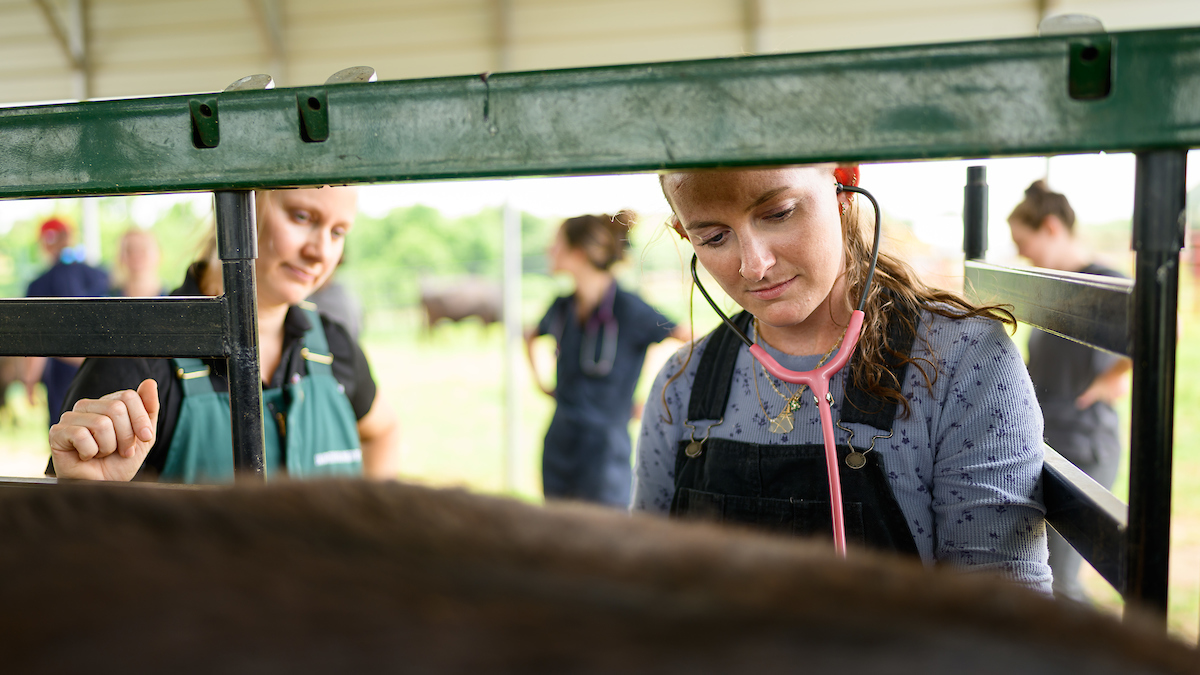Canine Spinal Cord Injury Program Tests New Drug
The Canine Spinal Cord Injury Program at North Carolina State University’s Veterinary Teaching Hospital is evaluating the efficacy of a drug being developed to improve hind limb function in chronically paralyzed dogs.
The drug, a novel potassium channel antagonist or blocker, showed promise in a preliminary trial in dogs with spinal cord injuries. The clinical trial is funded by NeuroMetrix, Inc. of Waltham, MA.
“Acute spinal cord injuries are a common problem in dogs and due to the poor regenerative capacity of the central nervous system, severely injured dogs make an incomplete recovery and can be left with permanent hind limb paralysis,” says Dr. Natasha Olby, Associate Professor of Neurology who is the study’s principle investigator. “In spite of the lack of recovery, these dogs may have intact, if dysfunctional, neural tissue at the level of the injury. We are interested in trying to restore function to this tissue”
Axons (nerve processes) normally conduct impulses up and down the spinal cord at rapid rates to maintain communication between the brain and the rest of the body. This is made possible by the presence of a fatty insulating sheath called myelin. Severe spinal cord injuries cause destruction of these axons, resulting in paralysis. However, even after severe spinal cord injury dogs can be left with some intact but demyelinated axons extending across the injured area. The loss of myelin results in a failure to conduct impulses. Blockade of potassium channels on these exposed axons can restore conduction, with the potential for improving hind limb function.
A drug called 4-aminopyridine (4-AP) has been shown to improve function in this way, and a sustained release version is presently under review by the Food and Drug Administration to improve walking ability in people with Multiple Sclerosis. Unfortunately it can cause side effects such as anxiety, tremors, and seizures. The drug to be used in this study is a derivative of 4-AP and appears to have the same beneficial effect without the side effects.
The study will compare the efficacy of 4-AP with the derivative (T-BOC) and a placebo. In phase 1, participants will be hospitalized for a week while the optimal dose of both drugs is determined. Dogs with a positive response will participate in phase 2, which lasts 10 weeks. During this time the owner will administer a drug three times a day and neither owners nor investigators will know the identity of the drug treatment. Participants will be assessed and video taped walking at the Veterinary Teaching Hospital on a weekly basis.
Participating dogs must have suffered an acute thoracolumbar spinal cord injury at least six months previously that resulted in permanent inability to use the hind limbs and be free from any urinary tract infection. All costs associated with hospitalization, assessment, and drugs will be covered by the trial at no cost to the owner.
For more information, contact Dr. Natasha Olby at 919.513.7235 or e-mail ivddstudy@lists.ncsu.edu.
Re-posted Dec. 3, 2009


